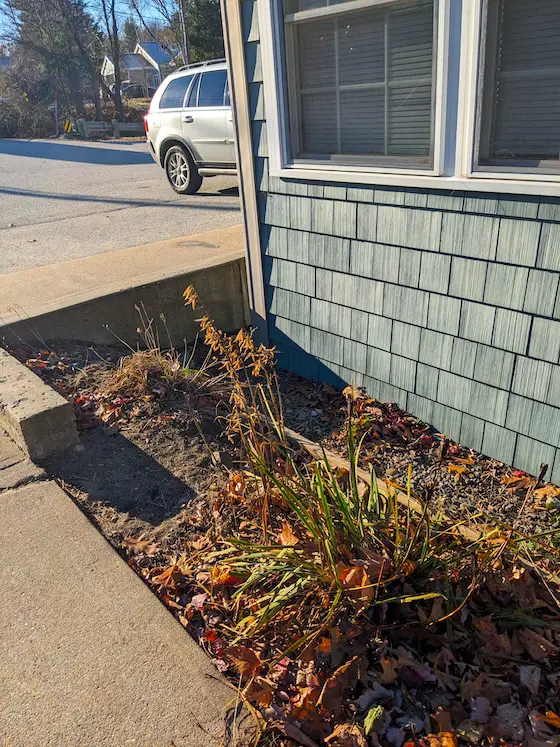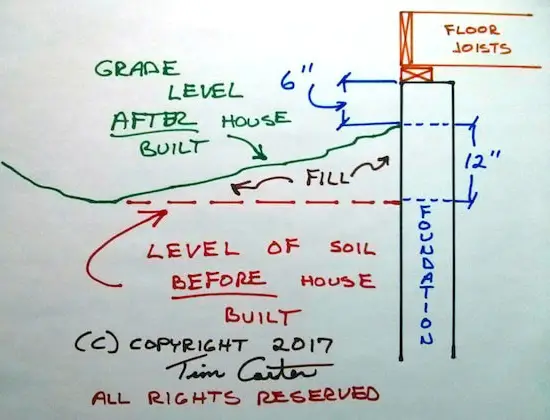How to Stop Water Flooding Into Your Home

How to Stop Water Flooding - This veterinarian office foundation was built so low into the ground they had to build a retaining wall to keep the fill dirt off the siding. It should have never passed inspection. Copyright 2023 Tim Carter
How to Stop Water Flooding Into Your Home - Set Your Foundation High
Water is both your friend and your foe. You need it to live, your plants and landscaping need a sip, and if your pets are like my stunning American Dirus dog that looks like a dire wolf, they need lots of water. Water is also used to build your home. But once your home is built, you don’t want water coming through your roof, your siding, your windows, or overtopping your foundation or slab. Homeowner insurance agents will tell you water is involved in a vast majority of claims.
Days ago I had to stop by my veterinarian’s office. I’ve been there before several times but I never really thought about how low the building was built into the ground. It’s so low that on the south side of the building, the builder had to erect a 2-foot high retaining wall one foot away from the building. If this wall had not been built, the wood-frame wall would be covered in dirt 20 inches below ground! That’s insanity. What’s more, it’s a distinct building code violation. How this building passed inspection years ago is a mystery.
The problem also exists to a smaller degree on the east wall of the building. the soil is just below the lowest course of cedar-shake siding. Once again, this is a disaster waiting to happen and a code violation. At the bare minimum, six inches of foundation should be visible between the bottom of the siding and the top of the soil against the foundation.
Propane Tank Explosion
This past spring a neighbor on my street had to make an expensive repair that cost over five figures. It was a new house that I saw built over the past eighteen months. When they set the foundation forms, I knew there might be a big problem on the back wall. A large hill extends up behind the house and the soil is very shallow. Rainwater or snowmelt rides across the top of the granite bedrock like an amusement park roller coaster goes down the first big hill.
Sure enough, we had a huge storm one night. Overland water cascaded down the hill aimed straight at the back wall of the house. The builder had the ground sloped ever so slightly towards the house believe it or not. Water from the roof poured onto the ground as gutters are often not used here in New Hampshire.
The water created a river that started to erode the ground as it ran around the house heading towards the nearby lake. It didn’t take long for it to cut a 4-foot-deep channel that was 5-feet wide. It almost exposed the house’s propane tank and it did expose the propane pipe that extended to the house. If a rock had pierced this pipe during the flood event, it might have caused a massive explosion. Three years ago a husband/wife couple I know were killed instantly in a propane explosion caused by a landslide at their home.
I could tell you no less than ten other stories about houses I know of that are built too deep into the ground. I could share tales of how errors like this have caused untold emotional and financial suffering. Instead, I think it’s best to share how to avoid problems like this.
Purchase a Great Lot
The first piece of advice is to think long and hard about purchasing a lot or land where a steep hillside is close to the location of the house. Ideally, you’d like to purchase a lot where the house can be built on a very small rise or high spot on the land where all of the ground around the house slopes away. Get my checklist that helps you buy the best lot.
The model building code used across the USA stipulates that the ground on all sides of your home should slope down at least six inches in the first ten horizontal feet away from the house. More slope is better and more foundation exposed is better. The first two houses I owned were built in the early 1900s and had 30 inches of foundation exposed above grade!
If your foundation is too low, you can sometimes adjust the grade to meet the code’s minimum standard. This assumes your lot has enough natural slope to your property lines. Swales or shallow ditches with a slight amount of slope are created that transport overland water to the lowest spot on your lot.
You have the best chance of success when building a new home. I urge you to get involved early in the process. Create a simple illustration showing how the top of your foundation or slab should be at least 18 inches higher than the highest point of land within ten feet of the foundation. Doing this you’ll discover if you have 8 inches of foundation exposed after the house is built that the fill dirt around the foundation will drop 10 inches when it is feathered out to that high spot.

I’m also available by phone or video call to assist you with water problems or any other conundrum you face. The link opens in a new window.
Column 1535